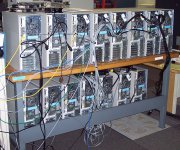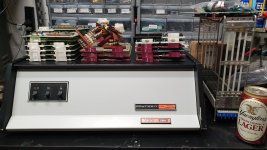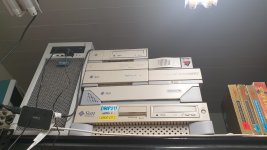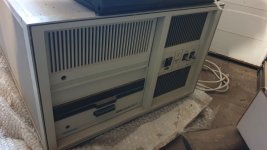I've learned a lot from this thread. I'm in the camp that is in favor of exploring the original hardware even though it can now be emulated, or at least simulated on other more modern equipment.
I was considering adding some SUN or SGI equipment to my collection. But I am not sure I want to spend the money to acquire it or learn a whole new platform.
Speaking from the experience of running several different Unix workstations, going all the way back to the TRS-80 Models 16, 16B, and 6000 running Xenix through running an AT&T 3B1 ( a small incremental improvement, mostly in being Sys V instead of Sys III and having more RAM; it wasn't really any faster) through running a small two node Apollo DomainOS system (two DN3500's, one server with tape, 690MB drive and 24MB RAM and one workstation with the 19 inch monitor, networked with Apollo Token Ring; these are 25MHz (IIRC) 68030-based systems), the simple fact of the matter is that, at a Unix shell prompt, there really just isn't that much difference between those systems and a modern Linux or *BSD box. Sure, some things have been modernized, but vi is still vi, and I use vim on my Debian 11 system almost exactly like I used vi on the old Xenix Tandy 6000.
All those machines are long gone; replaced by Linux boxen of various speeds over the years. My main boxen right now are a pair of Dell Poweredge R515 rack mount servers and a Dell Precision 7740 laptop, all running Debian 11 at the moment.
But I do understand the "thrill" of getting an old box loaded and running. The Tandy 6000 was fickle enough when it was new; the DN3500's were even more fickle. And while I used my T6K for quite a while, once I got the more compact 3B1.... The 3B1 was my main box for a long time post-t6k, both before and after the DN3500 experiment. (They just took way too much power and were just way too weird, even though they were supposed to be SVR4; the 3B1 had a great software archive and was bog standard SVR2, good enough to run CNews, pine, and trn. ). If you can find a working 3B1 they are fun and old boxen, 68010 based, for a great vintage feel; I never had any major issues with mine. For TCP/IP you can run the KA9Q SLIP/PPP stack, or if you can find one of the relatively rare Ethernet boards you can go that route.
I would pick something that can run NetBSD, personally, and that is relatively common and inexpensive. For text mode only a Sun 4m is plenty, but they do have their issues due to simple age. And parts are harder to get now than when I was last fiddling around with Aurora SPARC Linux (based on Red Hat Linux and later on Fedora). I would probably not go any older than Ultra 5/10 vintage these days if I were just getting started.
EDIT: Almost forgot SGI. While SGI machines of the Indigo2, Indy, Octane, or O2 generations or newer are quite capable, they need IRIX. This used to be a very difficult and expensive piece; I remember paying several hundred $ for my set of 6.5.19 discs. But purple Indigo2 IMPACT workstations or the O2 R10K/R12K workstations are quite usable. Just NEVER ship an O2 assembled; they are so brittle these days. Indigo2 is much more rugged. And unless you know exactly what you're doing stay away from Onyx/Origin or Altix. Especially avoid Altix these days, since they use the orphaned Itanium ia64 architecture (I have three Altix systems at $dayjob; one is 20 CPU, one is 4 CPU, and one is 32 CPU, and all of them use a lot of power and generate vast quantities of heat; they haven't been run in several years due to these reasons).
One further EDIT and I'm done: I've run Ultra 5/10 machines as personal workstations, and the ide disk performance stinks. Get a SCSI disk and bootable adapter...or get a Sunblade with better disk.







